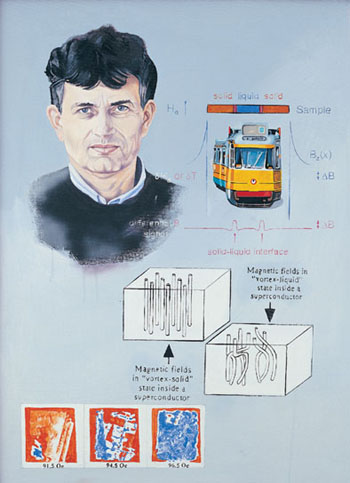Are you a journalist? Please sign up here for our press releases
Subscribe to our monthly newsletter:

Electricity, like people, can receive warm or cold welcomes. It prefers the cold ones. At extremely low temperatures (below -130°C), certain materials become superconductors – meaning they allow electricity to travel freely within them without presenting any resistance. An electric current can flow forever in superconductors because nothing in them, as opposed to today's wires, wears the current down. This nearly magical quality – the closest thing to perpetual motion in nature – has led to visions of power lines that span great distances, low-cost electricity and trains that float at high speed over tracks that don't hold them back.
Superconductors have another mystifying trait: They repel magnets so fiercely that a magnet will remain suspended in the air above them. They do this using the supercurrent whirlpools that exist within them. If scientists could better understand what processes impede the performance of superconductors as temperatures rise, they might be able to make them perform at higher temperatures. Prof. Eli Zeldov of the Condensed Matter Physics Department has shown that when the temperature rises, the supercurrent whirlpools that levitate the magnets are transformed from a well-organized solid-like structure to a disorganized liquid-like form.
He has also constructed a novel tool that enables scientists to watch this “melting” process as it occurs. The sensitivity of this tool exceeds that of all existing ones by a hundredfold, allowing for a precise visual record of the microscopic events that change the qualities of superconductors.
Prof. Zeldov’s research is supported by the Edward D. and Anna Mitchell Research Fund. He is the incumbent of the David and Inez Myers Professorial Chair.